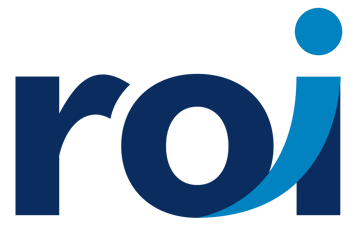The future is unknown. Based on current trends, healthcare IT (HIT) experts can only speculate, at best. The need to continuously change is evident. Last Tuesday, I had the pleasure of attending the 2018 GA HIMSS Annual Conference, in Atlanta, Georgia. It was interesting to hear the various perspectives on how HIT leaders manage day to day issues; how CIO’s build their enterprise by incorporating advances in artificial intelligence (AI) and Big Data; and how collaborative vendor and interpersonal relationships with employees influence the process. So, where are we today?
Think about the Internet of Things (IoT). The ability of the Internet to connect with gadgets, devices, and systems to exchange data. The term IoT is used daily in other industries and there is evidence of significant advances as IoT technology continues to infiltrate healthcare. From electronic health records (EHR) systems that interface with ancillary systems, Bluetooth enabled medication carts, Telehealth monitoring mechanisms, or a state-of-the art remote ICU. Currently, this type of IoT technology can undisputedly provide better disease management and ways to improve population health. With a host of available clinical systems with advanced automation capabilities, it makes sense to adopt some proven best practice principles to truly drive success.
No one wants to reinvent the wheel. Some of the most successful and respected HIT leaders in the nation follow these three simple steps:
STEP 1: Proper Project Planning
- Source project leaders with experience in clinical system transition, as well as strong cost and time management skills. There is better understanding of how the project management principles apply to healthcare IT.
- Design a team inclusive of clinical champions to be change agents that support the need for a system (and process) transition.
- Focus on current regulatory guidelines and the implications on certified EHR systems implementation. Pay close attention to any new HIPAA privacy rules, and have early discussions related to promoting interoperability, avoiding information blocking, and Medicare Access and CHIP Reauthorization Act (MACRA), which provides a new practice model as the healthcare industry moves from fee-for-service to value-based patient care.
- Identify the needs of your organization, the patient population served, and available resources prior to choosing your system.
For more information: https://www.healthit.gov/topic/laws-regulation-and-policy/health-it-legislation
STEP 2: Network and collaborate
- Form a community that encourages the sharing of best practices and how to improve HIT adoption. Clinical informatics teams in healthcare organizations tend to have limited resources compared to the effort required to switch from one clinical application system to another.
- Network and collaborate with other trusted HIT professionals and other organizations that have best practice processes in place. Adopting electronic physician order sets and clinical documentation templates that include standards of care/practice will decrease system implementation time and will increase overall quality of patient care.
- Educate the team members on upcoming HIT trends, new terminology, like IoT, and legislation impacting HIT.
STEP 3: Build & Foster Well-rounded Teams
It is important to place value on employees. Engage them in the clinical system selection process. Take the time to invest in your team by providing opportunities to engage in focus groups or roundtable talks.
- Encourage multidisciplinary leaders to assign a resource to attend your IT hosted discussions. Be sure to include unit clerks, nurses, physicians, and ancillary employees, as needed.
- Create an environment where employees feel safe to provide their thoughts and details of their daily patient care challenges as it relates to the clinical system in use. This format sparks the ideas necessary to help leadership make more informed decisions. The insight the multidisciplinary roles can provide are often unmatched. Once the system selection process is completed, keep these employees engaged throughout the testing rounds, training, and go live activation.
- Provide the support necessary to avoid burnout by supplementing your employees and providing opportunities for self-care and work/life balance. Consider out-tasking responsibilities to a trusted partner in areas that you may lack expertise or capacity.
The above points appear to be simple, but are often overlooked. They are necessary to facilitate seamless clinical system transition.
What best practices has your organization implemented to ensure growth and technological advancement?
Let’s continue this discussion…
At ROI Healthcare Solutions, these principles are engrained in our culture, giving us unique perspectives necessary to manage, implement, and solve many of the challenges faced while adopting an IoT initiative. This differentiator keeps clients satisfied. ROI cares about the process and aims to provide an unparalleled experience. ROI can help you transform your healthcare organization by engaging qualified clinical and healthcare IT experts to streamline your workflows, implement top clinical systems, or optimize the use of clinical systems currently in place.
Speak with one of our dedicated HIS consultants today to discuss how ROI can help your organization remain competitive and support best practice initiatives on your journey for excellence.
